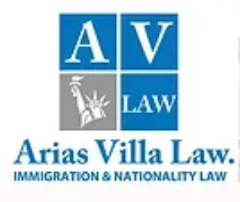FREQUENTLY ASKED QUESTIONS
Yes, it is possible to bring your family into the U.S., depending on your immigration status and the specific family members you want to sponsor. There are different ways to bring family members to the U.S.:
Immediate Relatives: If you are a U.S. citizen, you can sponsor certain immediate relatives, including your spouse, unmarried children under 21 years old, and parents (if you are at least 21 years old). There is no numerical limit on the number of visas available for immediate relatives, so the processing time is generally quicker.
Family Preference Categories: If you are a U.S. citizen or a lawful permanent resident (green card holder), you may be able to sponsor other family members under the Family Preference categories. These categories include unmarried children over 21, married children of any age, and siblings (if the sponsor is a U.S. citizen).
It’s important to note that the process and waiting times can vary based on the family relationship and the sponsor’s immigration status. For immediate relatives, the process typically involves filing a Petition for Alien Relative (Form I-130) with the U.S. Citizenship and Immigration Services (USCIS). For family preference categories, the process often requires joining a waiting list and waiting for a visa to become available.
Keep in mind that U.S. immigration laws can be complex, and the eligibility requirements may change over time. It is advisable to consult with an immigration attorney or seek assistance from a reputable immigration organization to understand the specific options available to you and to navigate the process effectively.
You can get a Social Security card if you are eligible for a Social Security number. Here are some common scenarios when you can apply for a Social Security card:
- U.S. Citizens: If you are a U.S. citizen by birth or through naturalization, you can apply for a Social Security card at any age.
- Lawful Permanent Residents (Green Card Holders): If you have recently become a lawful permanent resident of the U.S., you can apply for a Social Security card. You may do this as soon as you receive your lawful permanent resident status.
- Employment Authorization: If you are in the U.S. with a valid work permit or employment authorization document (EAD), you can apply for a Social Security card once you have permission to work in the country.
- Certain Visa Holders: Some visa categories allow individuals to work in the U.S. For example, H-1B, H-2A, H-2B, and L visa holders may be eligible to apply for a Social Security card if they have work authorization.
- Dependents: Dependents of certain visa holders who are eligible for work authorization may also apply for a Social Security card if they have permission to work in the U.S.
To apply for a Social Security card, you will need to visit your local Social Security Administration (SSA) office and complete an application. You will be required to provide certain documents to prove your identity, work authorization (if applicable), and U.S. citizenship or immigration status.
It’s essential to note that the process and requirements may vary based on your individual circumstances. To ensure a smooth application process, you should check the SSA website or contact your local SSA office beforehand to confirm the necessary documents and any additional requirements.
To apply for asylum in the United States, follow these general steps:
- Arrival in the U.S.: You must physically be present in the United States to apply for asylum. If you are outside the U.S., you cannot apply for asylum at a U.S. embassy or consulate.
- Timely Filing: Asylum applications must generally be filed within one year of your arrival in the U.S. However, there are some exceptions to this rule, such as changed circumstances or extraordinary circumstances that prevented you from filing earlier.
- Prepare Form I-589: To apply for asylum, you need to complete Form I-589, Application for Asylum and for Withholding of Removal. This form is available on the U.S. Citizenship and Immigration Services (USCIS) website.
- Gather Supporting Documentation: Along with Form I-589, you should include any relevant supporting documentation that helps establish your claim for asylum. This may include documents or evidence related to the persecution or fear of persecution you have faced or will face in your home country.
- Submit Your Application: After completing Form I-589 and gathering your supporting documents, submit the application to the appropriate USCIS address. Make sure to follow the instructions provided in the application form and include any required fees (if applicable).
- Biometrics Appointment: After submitting your application, you will receive a notice for a biometrics appointment. During this appointment, your fingerprints, photograph, and signature will be taken for background checks.
- Interview: USCIS will schedule an interview with you to review your asylum application and gather more information about your claim. Be prepared to answer questions about your fear of persecution and the reasons you are seeking asylum.
- Decision: After the interview, USCIS will make a decision on your asylum application. If your application is approved, you will be granted asylum and can apply for a work permit. If your application is denied, you may be placed in removal proceedings and have the opportunity to present your case before an immigration judge.
- Appeal (if applicable): If your asylum application is denied, you may have the option to appeal the decision to the Board of Immigration Appeals (BIA) or, in some cases, to a federal court.
It’s essential to consult with an experienced immigration attorney or a reputable immigration organization before applying for asylum. Asylum applications can be complex and may involve sensitive issues, so having proper legal guidance can increase your chances of a successful application.
A stay of deportation is a temporary suspension or delay of the deportation or removal process for an individual who is subject to being removed from the United States. When a person is facing deportation, they may request a stay of deportation from the appropriate authorities to temporarily halt the removal proceedings.
There are several reasons why a stay of deportation might be requested or granted:
- Legal Appeals: If the individual has pending legal appeals or motions in immigration court or before the Board of Immigration Appeals (BIA), they may request a stay of deportation while those appeals or motions are being considered.
- Humanitarian Reasons: A stay of deportation may be sought on humanitarian grounds, such as the presence of serious health conditions or family emergencies that require the person to remain in the U.S. temporarily.
- Deferred Action: In some cases, the U.S. government may grant a deferred action, which is a form of temporary relief from deportation. Deferred action allows the individual to stay in the U.S. for a specific period without being deported.
- Pending Visa or Immigration Application: If the individual has a pending visa or immigration application, they may request a stay of deportation until a decision is made on their application.
- Prosecutorial Discretion: U.S. immigration authorities may exercise prosecutorial discretion and choose not to pursue deportation in certain cases based on factors such as the person’s length of stay in the U.S., family ties, and community involvement.
It’s important to note that a stay of deportation is not a permanent solution, and it only provides temporary relief from removal. The duration of the stay can vary depending on the specific circumstances of the case. In some cases, individuals may need to regularly reapply for a stay of deportation if their situation warrants ongoing relief.
Seeking a stay of deportation can be a complex process, and it is typically advisable to consult with an experienced immigration attorney to understand the eligibility requirements and to receive appropriate legal guidance.
If your visa has expired and you are currently in the United States, it’s essential to take appropriate steps to address your immigration status. Here are some options you can consider:
- Depart the U.S.: If your visa has expired, and you have no legal basis to stay in the U.S., the best course of action may be to voluntarily depart the country. Leaving on your own can prevent potential negative consequences associated with overstaying, such as being barred from reentering the U.S. for a certain period.
- Apply for a Visa Extension: In some situations, you may be eligible to apply for a visa extension or a change of status while you are still in the U.S. This option is generally available for certain non-immigrant visa holders. However, it’s important to note that you must apply for the extension before your current visa expires.
- Explore Other Visa Categories: If you have a legitimate reason to stay in the U.S., you can explore other visa categories that may be suitable for your situation. Each visa category has specific requirements, and you must meet them to be eligible.
- Consider Adjustment of Status: If you are eligible for permanent residency (a green card), you may be able to apply for an adjustment of status while in the U.S. This process allows certain individuals to change from a non-immigrant status to permanent resident status.
- Explore Asylum or Protection Options: If you fear persecution in your home country, you may be eligible to apply for asylum or other forms of protection in the U.S. These processes can be complex, so seeking legal advice is highly recommended.
- Seek Legal Advice: Given the complexities of immigration laws, it is essential to consult with an experienced immigration attorney. An attorney can assess your specific situation, explain your options, and guide you through the appropriate steps to address your visa status.
It’s important to take action as soon as possible if your visa has expired. Overstaying a visa can have serious consequences and may negatively impact future visa applications or potential immigration benefits. Always seek reliable legal advice to ensure you are making informed decisions regarding your immigration status in the U.S.

